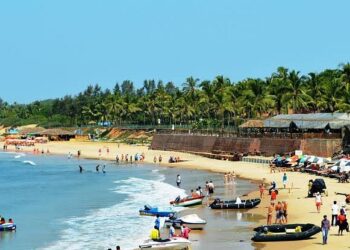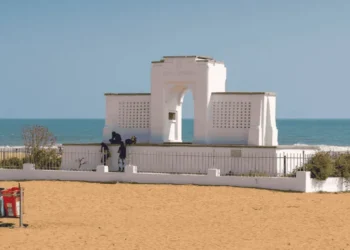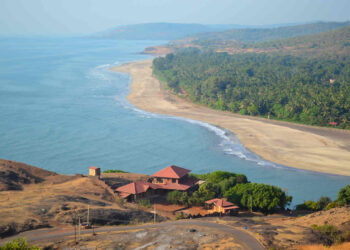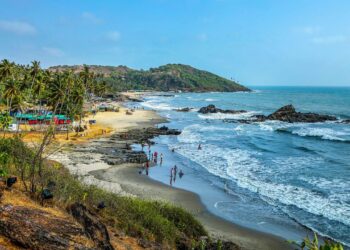High on Kapilash Hill, 26 km from Dhenkanal, Odisha, the Kapilash Temple stands as a holy shrine for Lord Shiva, worshipped here as Chandrasekhar. At 2,239 feet, surrounded by dense forests and misty peaks, this ancient temple is a spiritual gem. If you wish to visit this sacred place, here is a simple guide on its story, look, prayers, and how to go.
Fun Fact: The temple is named “Kapilash” after Sage Kapila, who is said to have meditated here, seeking Shiva’s blessings.
Mythological Importance
Kapilash Temple holds ancient legends. One legend says Sage Kapila prayed on this hill, and Lord Shiva appeared as a lingam to bless him. Another tale, from local lore, tells of a cow that poured milk on a hidden lingam, revealing the deity to villagers who built the temple. Locals believe the lingam grants wisdom and peace. The hill is said to hold divine power, calming all who climb it. This makes Kapilash a key Shiva shrine, tied to devotion and enlightenment.
Historical Overview
The temple began in the 13th century, under the Eastern Ganga dynasty, though some say worship started earlier. Dhenkanal, a spiritual hub, has old texts noting its sanctity. A stone from 1246 CE near the temple marks its start, per Odisha Tourism. King Narasinghdeva I likely built it, carvings suggest. In the 1500s, local chiefs added steps, temple logs note. By the 1700s, it was a major pilgrimage site. In the 1800s, Dhenkanal kings kept it safe. After 1947, Odisha’s leaders took over. Now, the Endowments Department runs it. From 2000 to 2010, they fixed paths but kept the old look. Odia saints like Bhima Bhoi sang of Shiva here, spreading its fame. Today, it draws thousands to Dhenkanal’s sacred land.
The temple’s past is rich. Some say it was a meditation center for sadhus, as per Incredible India. In the 1900s, British scholars noted its art. Recent digs found pottery from 1200 CE, proving its age. Its hilltop location, reached by 1,351 steps, adds to its holy role, Travel India says.
Architecture of Kapilash Temple
Kapilash Temple, on a 5-acre hilltop, shows Rekha-style Kalinga art. The main shrine, from 1246 CE, is 60 feet high with gray stone walls carved with Shiva’s trident, Parvati, and floral patterns. A small porch leads to the sanctum, where a 4-foot Shiva lingam, Chandrasekhar, sits under a curved vimana, lit by oil lamps. The sanctum’s walls, worn by time, hold etchings of Shiva’s dance, a Kalinga mark.
Small shrines for Parvati, Ganesha, and Kartikeya are in the yard. The Parvati shrine, from 1300 CE, shows her with a lion, for power. The Ganesha shrine, near the steps, has him with a modak, for wisdom. The Kartikeya shrine shows him with a peacock, for bravery. These shrines add to the temple’s prayers. The hall, or jagamohana, has pillars with vine carvings, pure Kalinga style, per Incredible India.
You reach the temple by climbing 1,351 stone steps from the hill’s base, passing forests and caves. The courtyard, with rough stone, feels holy, shaded by neem and sal trees. A small tank, fed by a hill spring, is for rituals, its edges plain but old. Low walls have niches for minor gods, like Hanuman, guarding the place. Carvings on walls show Shiva’s tales—his Nataraja form, his calm meditation—to teach faith. In 2010, new paths were added, but the hill stays wild, good for prayer.
Rituals and Festivals
The temple hosts lively festivals. Mahashivratri, in February or March, is biggest, with devotees offering water and bilva leaves to the lingam. Shravan Maas, in July or August, has milk prayers and song nights. Kartika Purnima, in November, sees lamp-lighting on the hill. Daily rituals include morning chants, Abhishekam, and evening lamps. Special pujas like Rudra Homam cost ₹100-500, per Odisha Tour. A stall gives free sesame sweets as prasad. On Mondays, devotees offer milk for peace.
Odissi dance shows during Shivratri add cultural joy, per Tours Orissa. The hill’s caves, used by sadhus, make festivals mystical.
Information for Travelers
Hours and Entry: Open daily, 5:00 AM to 12:00 PM, then 3:00 PM to 8:00 PM. Entry is free, but pujas cost ₹100-500. Photos are fine outside, not in the sanctum, per Tripadvisor.
Clothing: Wear simple clothes covering shoulders and knees. Men for rituals wear dhotis, often no shirt.
How to Get There:
Air: Biju Patnaik Airport, Bhubaneswar, 80 km away, is closest. Taxis take 2 hours, ₹1500-2000.
Train: Dhenkanal Railway Station, 26 km away, connects to Kolkata (8 hours) or Bhubaneswar (1 hour). Autos cost ₹300-500.
Road: Buses from Dhenkanal (26 km) reach Kapilash Road. Autos cost ₹50-100. Climb 1,351 steps to the temple.
laces to Stay:
Dhenkanal has guesthouses like Hotel Surya (₹1000-2000) or Nirupama Kapilash (₹2000-3000). Bhubaneswar, 80 km away, has hotels like Swosti Premium (₹4000-6000). Stalls sell puri, tea nearby, per Incredible India.
Best Time to Visit:
October to March, 20-30°C, is cool. Weekdays are quiet. Mahashivratri is busy, so book early.
Nearby Attractions:
Joranda Monastery, 25 km away, is a Mahima shrine.
Saptasajya Hill, 15 km away, is scenic.
Dhenkanal Palace, 26 km away, is historic.
Anantapur Waterfall, 40 km away, is a nature spot.
Bhimkund, 70 km away, is a sacred pool.
Final Thoughts
Kapilash Temple in Dhenkanal, Odisha, a holy land in eastern India, is a treasure of faith. Its stone carvings, serene setting, and divine aura draw devotees and travelers. Shiva’s divine touch fills its hill, making it a must-see among Odisha’s sacred places.











